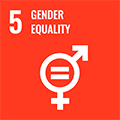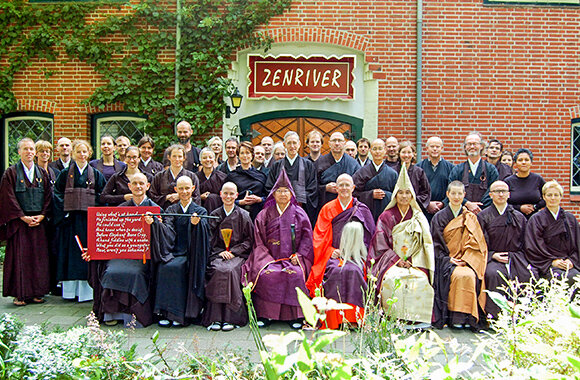Use of Cookies
Our website uses cookies to facilitate and improve your online experience.

At Zen River Temple, the four traditional classes of practitioners—male and female monastics and lay-people—have the opportunity to practise together as a single team. It is one of the first things that strikes our Asian friends when they visit us. And that is understandable, as in most Buddhist countries the four classes are strictly segregated and often engage in rather different styles of practice. But at Zen River Temple, all four groups can follow the whole practice programme—with the exception of certain priestly functions, such as conducting services, which are reserved for experienced monastics.

This style of practice seems to be quite common in modern Western Zen temples. That is partly a result of their specific social and cultural environment but also because of the way that those Zen temples have been established over the last few decades. When Zen Buddhism arrived in the West, it entered completely new territory. There were no temples, no priesthood, and no form of supportive membership. Many people were interested in meditation but had no idea of other aspects of contemporary Japanese Zen. The teachers that came over from Japan attracted both male and female students and often hired retreat centres or set up practice places that could accommodate them in a community-style environment.
In such a setting, the role of ordained monastics does not differ so much from that of their lay counterparts. As a result, it seems that the function of monastics and priests needs to find a new meaningful form. At Zen River Temple, all the full-time, long-term residents are ordained. They take care of the temple, keep the training programme going, and function as hosts for those who join short-term. As in many other places in the West, gender equality is a matter of course. Men and women usually have the same opportunity to practise, receive ordination, and obtain qualifications as a teacher and/or priest. In fact, today there are many influential Western teachers who are women, and this has had an impact on changing aspects of the often male-oriented style of Zen practice.
The fact that women and men practise together in a single community rather than in a strictly segregated monastic setting has some interesting consequences. A famous koan of the Hekiganroku states very clearly that all voices are voices of the Buddha. But many people feel that the voice of women has often not been heard enough by their male counterparts. And this applies not only to the voice of women when they are in the company of men, but also to the feminine voice within men themselves. Practising in close proximity to women can help men in this respect. And it can also work the other way around: practicing closely together with men, women may find it easier to recognize voices within themselves that are traditionally more identified with men.
If we see Zen practice as a way to heal—or to return to our intrinsic wholeness—it is important to acknowledge all the voices within us. And this will certainly put us in a better position to communicate with others, whatever their gender—male, female, transgender, or non-binary. Would it not be wonderful to become more efficient in bridging the often wide gap between the sometimes rather rigid masculine and feminine approaches to the situations we find ourselves in ?
This community style of practice may change in the future – after all, we are just at the beginning of a new era of Buddhism in the West. But right now, it seems to be a healthy way to go and it may inspire future generations to be flexible and come up with other models. Clearly, every approach has its advantages and disadvantages. After having practised for so long together with both men and women, I sometimes wonder whether it might perhaps be beneficial to also have men practise only with other men, and women only with other women for certain periods of time. Gender equality does not necessarily mean that everyone needs to be always together in the same programme. It is more a matter of really appreciating each other as fully capable Buddhist practitioners, and finding the best ways to inspire one another.

